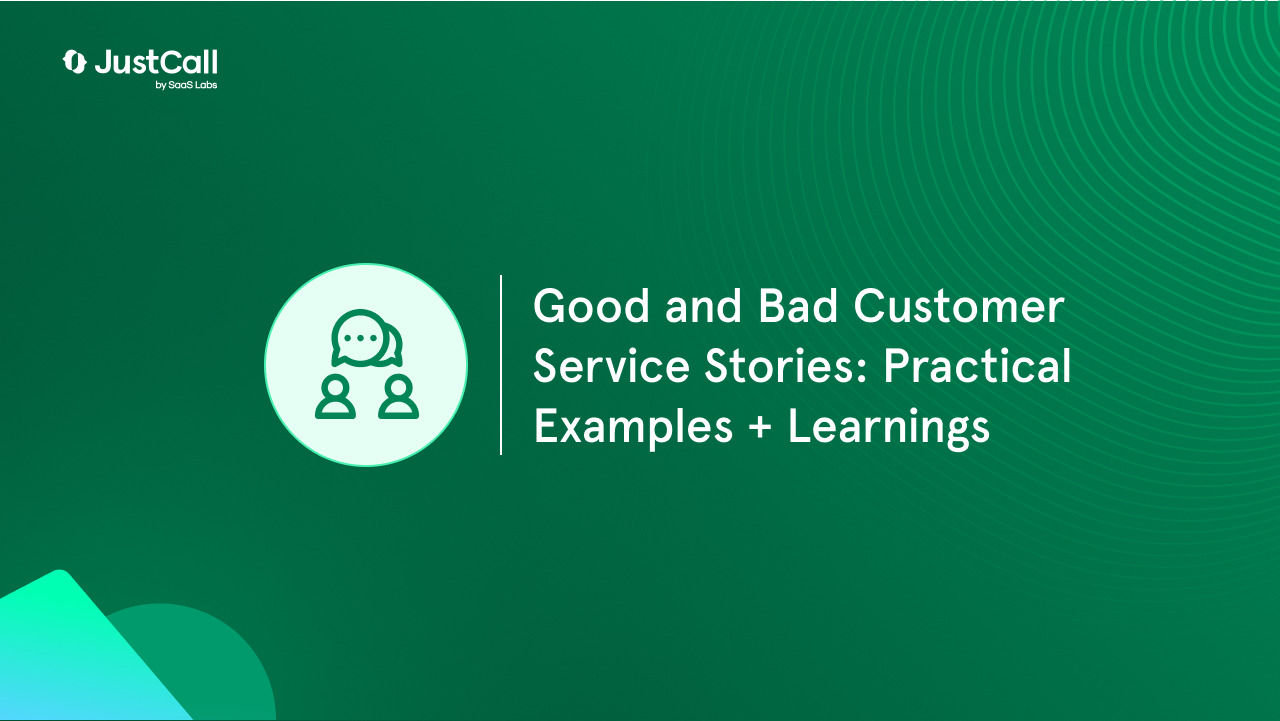What makes for inspiring customer service stories? And what leads to poor customer service stories? Is there a difference in approach? What can be learned from both these examples?
In this blog, we will look at real-life examples of good customer service stories and bad customer service stories. We will also learn what you can take away from these examples and apply the same to your business.
5 Best Customer Service Stories
5 Good Customer Service Stories
|
Key Learnings
|
| 1. Accelerated and prompt responses |
- Customers love companies that can offer them fast solutions and instant support–be it via email, social media, phone support, or more.
- Companies must focus on optimizing their workflows to save the customer’s time and must invest in a robust help desk tool to automate repetitive, routine tasks.
- Organizations must also focus on making customers a priority by creating a change in the culture of the enterprise; there needs to be a shift in the mindset of the employees, who must be trained to prioritize people in everything they do.
|
| 2. Consistent feedback gathering is paramount |
- Organizations must invest in customer feedback-gathering tools to do the following:
- Understand the user’s needs
- Offer personalized solutions
- Roll out strategically-conceptualized surveys to gather the pulse of the customer
- Communicate the kind of changes being implemented and let the customer know that their suggestions/opinions are being valued and acted upon
- If the feedback has not been acted upon, the organization must honestly communicate about the situation at hand and, if possible, reward the customer in some way (this could be by way of free coupons, deals, freebies, etc.).
|
| 3. Self-service tools are a big win |
- Customers love brands that allow them to self-serve–this includes having an in-depth knowledge base with all the answers, support articles, and common FAQs.
|
| 4. Omni-channel support is another must-have |
- Providing omnichannel service–be it by way of phone, live chat, email, etc. enables customers to leverage a highly-contextual and seamless customer experience.
- The agents must be trained to provide support across channels and mediums that the users prefer.
|
| 5. Demonstrating emotional intelligence is key |
- The ability to read the customer’s emotions is another high-value skill that customer service agents must demonstrate.
- Organizations must focus on training agents in soft skills such as patience, empathy, and so on to gain the customer’s trust and confidence.
- Compassionate customer service will always stay on top of the customer’s mind and will convert them into long-term loyal brand advocates.
- The agents must be trained to be empathetic and helpful, particularly if the customer is going through a hard time.
- The agents must also focus on providing small gestures such as offering freebies, listening to the customer’s requirements actively, demonstrating gratitude by way of a handwritten letter, and so on.
|
The learning: There are thousands of ways to add a positive note to your customer experience. Oftentimes, starting small does the trick. Organizations don’t need to spend millions of dollars to make the customer happy; a small gesture goes a long way in cementing a long-term relationship with the user.
5 Worst Customer Experience Stories
| 5 Bad Customer Service Experience Stories |
Key Learnings |
| 1. Prioritizing the organization’s policies and rules over the customer’s needs |
- Stakeholders must keep the customer in mind when creating new business policies to tackle scaling the business.
- Example: If a customer requests to match the price of a product in-store with a lower price of the same product online, the company must provide it at the online price. This will build brand loyalty and enable the customer to feel valued by the brand.
|
| 2. Not addressing social media platforms adequately |
- Companies must have a dedicated social media team to respond to customer complaints and posts quickly, particularly negative feedback.
- Example: If a customer complains about a damaged product, the social media team must do the following:
- Address the issue quickly
- Provide a practical solution instead of a templated answer
- Build a gameplan for potential issues and train agents to tackle the same
|
| 3. Ignoring user feedback altogether |
- Organizations must view customer feedback as a treasure trove of data related to the following:
- The customer’s likes and dislikes
- Current pain-points
- Product-centric problems
- The team must provide clear and simple responses to prevent the post from going viral, leading to bad publicity.
|
| 4. Letting the customer hold or wait on the phone for a longer duration |
- Callers hang up the phone around 40 seconds into the call, so making the customer wait will lead to frustration and anger.
- Focus on lowering the hold time, offer additional ways as well as multiple communication channels for the customer to reach out to the team, and must always thank the customer for their patience.
|
| 5. Communicating sensitive customer information insensitively |
- Instances of “a credit card being declined” are all too common. Instead of blurting out this embarrassing incident, customer service reps must handle the issue with sensitivity and subtly ask the customer for an alternative.
|
The learning: The customer service field, like any other field, is not foolproof. Technical issues might happen. The product may get delayed. There may be unpredictable circumstances. No matter how bad the situation gets, it is important for the organization to correct the situation and be honest as well as upfront about the approach being taken.
Join 6,000+ Businesses Using JustCall To Deliver 5-Star Support
Start your 14 day Free Trial
Conclusion
The primary difference between good and bad customer service stories is the level and quality of customer service provided.
That said, good and bad customer service stories can impact a company’s reputation, customer loyalty, and future business. Providing excellent customer service can lead to positive word of mouth, repeat business, and increased customer satisfaction.
On the other hand, poor customer service can result in negative reviews, loss of customers, and damage to the company’s reputation.
Good customer service involves being responsive, empathetic, and going above and beyond to meet the customer’s needs. In contrast, bad customer service can involve rude or unhelpful employees, long wait times, and a lack of follow-up or resolution. This can frustrate customers and make them feel like the company doesn’t value their business.
If you want to offer exceptional customer service and positively impact the bottom line, get your employees trained, make it easy for customers to reach for support, and put customers first with everything you do.












